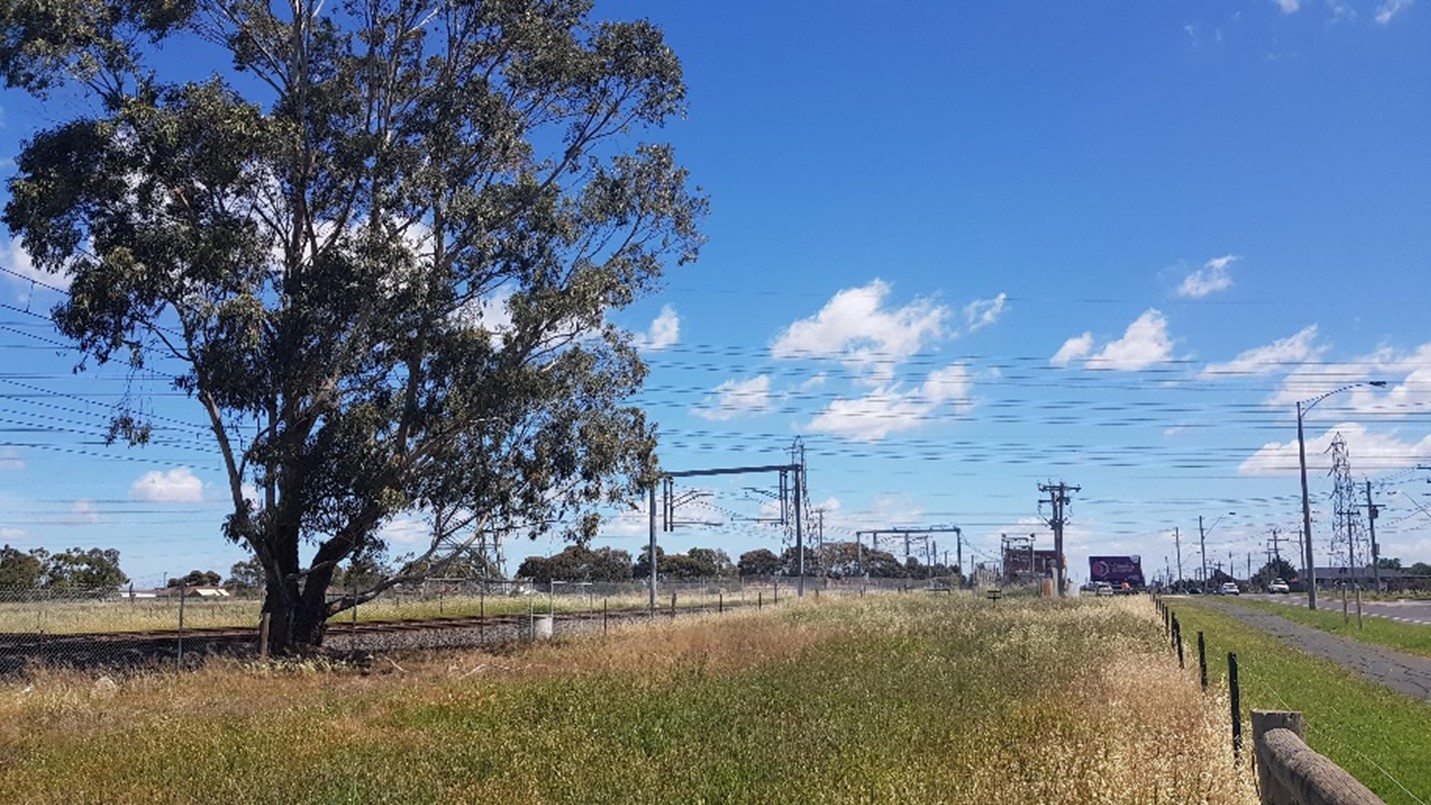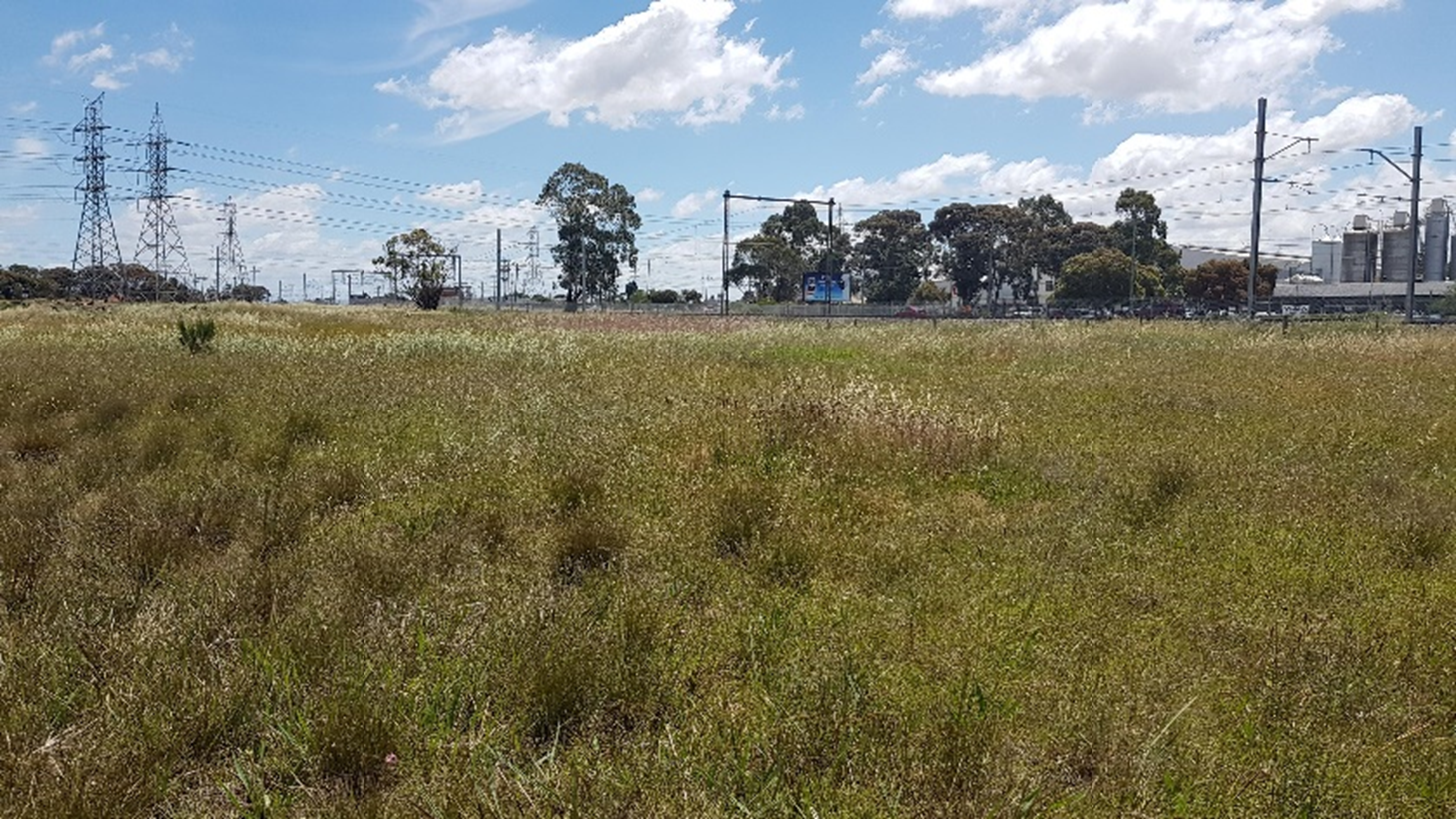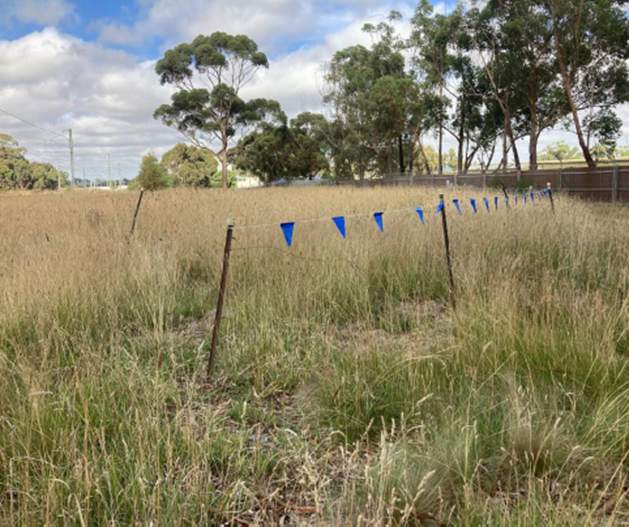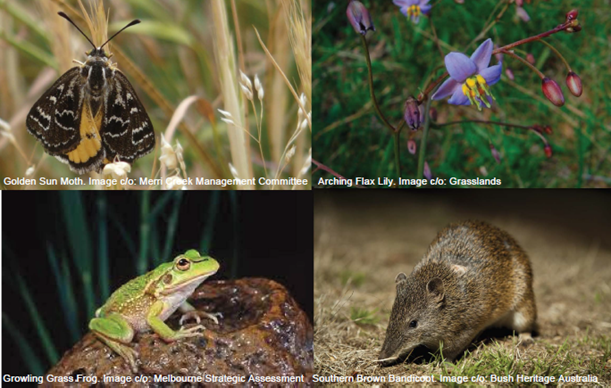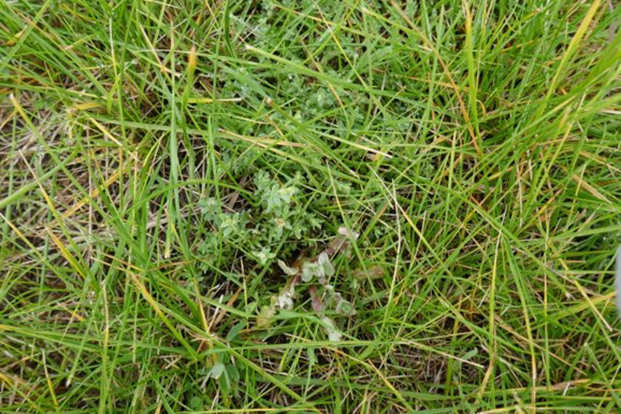Metro Tunnel Project Rail Infrastructure Alliance – Environmental Outcomes
Describe WHAT you have done and HOW you have done it.
The Rail Infrastructure Alliance (RIA), a Rail Projects Victoria (RPV) package of works delivered as part of the Rail Network Alliance, has set a precedent for major rail infrastructure projects by leaving a positive ecological net gain without the need for biodiversity offsetting. RIA has pursued ecological enhancement and connectivity opportunities (RIA Ecological Enhancement Project (‘the Project’)) on a voluntary basis guided and incentivised by the Infrastructure Sustainability Council (ISC) certification scheme. RIA not only minimised and mitigated the negative impacts caused by climate change pressures on ecosystems, but actively contributed to the protection, maintenance, and enhancement of biodiversity through design decisions and enhancement opportunities within an operational brownfield rail corridor.
The opportunity to provide ecological enhancement within a rail corridor is rare and was accompanied by complex and challenging issues. The approach to the delivery of the Project achieved this by ensuring that no native vegetation was removed to facilitate the works and that high-value ecological sites have been maintained, protected, and enhanced. Alongside the commitment to not remove any native vegetation, the Project installed ‘no go zones’ (NGZ) to further protect threatened species. RIA had taken this opportunity to develop a bespoke innovative methodology to assess the enhancement potential by increasing ecological values and the extent of the existing remnant vegetation for habitat connectivity. These outcomes were delivered in two key stages:
Stage 1 – Ecological Impact Assessment (EcIA). This involved the development of an innovative method to select appropriate sites for enhancement, assessing both the ecological value and habitat connectivity value of the assets within the rail corridor, as well as providing a method to rank each site for its enhancement potential. The EcIA method drew upon existing scientific and widely accepted practices for the assessment as required by State legislation for the characterisation of ecological value. Building from this, a novel methodology was developed for scoring and ranking ecological values and habitat connectivity to consider the best locations for ecological enhancement sites. Using the NGZ as the proxy for ecological value, RIA ensured that all native vegetation and rare and threatened fauna habitat types were considered in the assessment method.
Stage 2 – Delivering Ecological Enhancement. RIA engaged with key stakeholders to pursue several ecological enhancement opportunities. Through consultation with a range of landowners and land managers, sites were selected for enhancement with the most significant probability of success. A total of five (5) sites managed by MTM (Metro Trains Melbourne) were selected along the Sunbury Rail Corridor due to the presence of high ecological values. By enhancing these five (5) ecological sites, RIA developed an Ecological Enhancement Program to deliver over three (3) hectares (3ha) of additional native grassland within the rail corridor which will reconnect Plains Grassland patches and lead to an overall improvement in connectivity by more than 50%. This equates to greater than 30% enhancement of the ecological value that exists within the RIA Project land which should be achieved in a 10-year period.
What were the OUTCOMES and how were those outcomes shared?
Native grasslands are endemic to southwestern Victoria and primarily confined to the Victorian Volcanic Plain bioregion. These native grasslands (Plains Grassland Ecological Vegetation Class (EVC)) are threatened at both the Commonwealth and State level – where presently, they are listed as Critically Endangered under Commonwealth legislation and listed under Victorian legislation. Key to the ongoing preservation of this threatened ecological community is the protection of high-quality examples of the ecological community where they remain. These examples often exist as small, fragmented remnants within public land roads and rail reserves. The awareness of the conservation value of these high-quality remnants within Melbourne’s urban growth corridor has increased in recent times, placing greater emphasis on the protection and restoration of these EVCs.
The land on which the Sunbury Rail Corridor was built once supported vast areas of native grassland and examples of these high-quality remnant EVCs remain today where they are protected within biosites. These biosites not only protect examples of the threatened ecological community but also provide habitat for several flora and fauna species that are also threatened at the Commonwealth and State level.
Leveraging strong connections with the rail operator, MTM, RIA had successfully integrated the ecological enhancement program into a previously established biosite conservation management program, demonstrating MTM’s ability to protect and maintain these sites from habitat loss and fragmentation.
Ecological value was assessed by RPV during the planning phase of the Project to inform the planning and environmental approvals required to facilitate the commencement of the works. Prior to commencing design, ecological areas were surveyed and inspected by ecologists. Where design was within proximity of NGZs, collaboration occurred between the design and environment teams through an interdisciplinary design review process to raise ecological matters. This partnership approach between RIA Design and Environmental and Sustainability teams allowed for greater protection of ecological impacts by assessing the geographical extent of the remaining reserves of native grasslands.
The Project presented a unique opportunity to contribute to biodiversity conservation efforts in the Sunbury Rail Corridor in collaboration with the rail operator MTM which is managing biosites through their existing successful biodiversity program. As mentioned, these biosites are located within the rail corridor and support habitats synonymous with the Environment Protection and Biodiversity Conservation Act 1999 (EPBC) listed Natural Temperate Grassland of the Victorian Volcanic Plain (NTGVVP) ecological community (critically endangered) and the Flora and Fauna Guarantee Act (FFG) listed Western (Basalt) Plains Grassland community. These sites also support habitat for several rare and threatened flora and fauna species protected at the Commonwealth and State level.
Consultations with MTM’s Biodiversity team, which actively coordinates and oversees the management of existing areas of ecological value across the metropolitan Melbourne rail network, led to the identification of preferred sites along the Sunbury Line for the enhancement of ecological values. This collaboration was instrumental in understanding MTM’s biodiversity priorities across the region as well as gleaning an on-ground understanding of the existing ecological conditions at the sites to be enhanced.
Overall, the process allowed for RIA to consider the best locations for ecological enhancement within operational brownfield railway corridors, factoring in both ecological value and habitat connectivity between areas of ecological value within and proximal to the Project land, with respect to the wider strategic context for native grassland conservation within Melbourne’s urban growth area. This meant that RIA could select sites within the Project land that would provide the greatest contribution to grassland conservation in terms of quality, connectivity, and longevity. The RIA methodology for the enhancement is new and bespoke to conserving and enhancing EVCs and there is potential for this methodology to be adopted for other rail or linear infrastructure projects in the future.
As stated previously, through collaboration and partnership with MTM, RIA has increased the geographical extents of critically endangered Plains Grassland by over 3ha, contributing to over 30% increase in ecological values, while maintaining and enhancing habitat connectivity by over 50%. The enhancement has also been shared through MTM’s previously established Biosite Management Program.
Describe WHO benefited from your initiative, innovation, or approach?
Urbanisation remains to be an increasing threat to ecological value. Native grasslands are no longer extensive and have become highly fragmented in a landscape largely cleared for land uses such as urban development. The ongoing risk of habitat fragmentation continues to threaten the viability of these grassland EVCs to continue supporting critical ecosystems across Victoria.
Acknowledging the transport industry's ability in protecting these values, RIA has championed a practical and unique conservation program focused on improving the critically endangered grassland community, which directly benefits the local ecosystem. By protecting and restoring the habitat, the program safeguards the unique biodiversity found within the grasslands that are critically endangered.
RIA is pursuing ecological enhancement opportunities to protect the habitat of the critically endangered Plains Grassland EVC to support several nationally and state-listed threatened species. By creating habitat connectivity and restoring ecological balance, the Project supports the survival and proliferation of various EPBC and FFG listed threatened species such as the spiny rice flower (Pimelea spinescens subsp. Spinescens), arching flax lily (Dianella longifolia var grandis), growling grass frog (Litoria raniformis), striped legless lizard (Delma impar), golden sun moth (Synemon plana), and southern brown bandicoot (Isoodon obesulus). By providing suitable habitats and improving connectivity, the program helps safeguard these species from further decline and potential extinction, promoting their long-term survival.
Underpinning this achievement is the effective collaboration between the Project team and rail operator (MTM), allowing MTM to expand upon their pre-existing historical conservation efforts. The community is another direct benefactor of RIA’s ecological enhancement program, protecting and restoring the natural habitats within the operational rail corridor, create healthier and more resilient environments, community members can enjoy as they utilise the train network. Protecting native flora and fauna enhances the aesthetic appeal of the community while fostering a harmonious connection between humans and nature, enhancing the community’s quality of life.
The novel approach of RIA ecological enhancement program demonstrates an approach to both conserving and enhancing biodiversity values, simple in its development yet a proactive step for major infrastructure projects to adopt in planning for future projects where high materiality biodiversity values are present. Through its implementation, RIA reveals how ecological gains can be achieved for linear infrastructure projects in an urban setting without reliance on native vegetation offsetting schemes.
What LEGACY and UN SDG CONTRIBUTION was achieved?
The success of RIA’s ecological enhancement program is truly a direct benefit of participating in the ISC certification scheme, despite the challenges of working within an existing brownfield operational railway, the ISC framework guided RIA to go beyond business as usual and pursue opportunities that would typically be precluded by relying on existing statutory processes and/or guidelines. RIA can attest to the challenges of implementing sustainability outcomes in operational brownfield railway corridors given achieving such outcomes can be restricted by operational constraints and limited policy frameworks.
The ecological enhancement of the Sunbury Rail Corridor is a successful case study illustrating the benefits of an ISC requirement in driving the achievement of protection, enhancement, and connectivity of ecological values. As such, RIA has focused on pursuing opportunities to make rail not just a ‘green’ mode of transport but a sustainable industry,’ aligning with the United Nations Sustainable Development Goals (SDG).
The ecological enhancement program will contribute to SDG 15’s ‘Life on Land’. This goal seeks ‘to protect, restore and promote sustainable use of terrestrial ecosystems and halt and reverse land degradation and biodiversity loss’. More specifically, the program addresses target SDG 15.5 to ‘protect biodiversity and natural habitats’ by taking significant action to reduce the degradation of NTGVVP and reverse the loss of critically endangered and threatened species within and in proximity of the Project area.
Directly addressing SDG 15, the sites selected had the greatest opportunity for habitat connectivity enhancement to support the protection and continued existence of endangered species, seen as an improvement of ecological connectivity. In quantifying the value of ecological connectivity, the 50% increase was completed by assessing the existing number of isolated sites and comparing the baseline against the area of connectivity by the proportion of their total area.
Further, RIA’s conservation efforts address SDG 11’s ‘Sustainable Cities and Communities’ by promoting sustainable urban development through integrating ecological considerations, RIA contributes to creating a more sustainable, inclusive, and resilient community with enhanced biodiversity. Similarly, the program also indirectly supports SDG 13: ‘Climate action' by contributing to climate action as RIA’s ecological restoration efforts create carbon sinks which help reduce greenhouse gas emissions. RIA also has left a lasting positive community benefit, in alignment with SDG 3’s ‘Good Health and Well-being', by providing a healthier ecosystem with the preservation of biodiversity and green spaces linked to improved physical and mental health outcomes, contributing to the overall well-being of community members.
The methodology has developed an approach that can be readily adopted by other linear infrastructure projects interested in pursuing similar habitat enhancement and connectivity initiatives. As such, the RIA Ecological Enhancement Program will not only increase the ecological values and connectivity within the Project Land, but it will add value to the significant gains that have been achieved by its delivery partner MTM in restoring and protecting biodiversity values across the Melbourne metro network.
The ecological enhancement will contribute to the ongoing protection and management of grasslands within peri-urban Melbourne. RIA’s success highlights that as more major infrastructure projects are proposed, a balance between social, economic, and environmental outcomes can be achieved across Melbourne’s rail network for linear transport projects. RIA’s voluntary net gain in native biodiversity is a significant achievement which benefits ecological communities by protecting and providing habitat to several nationally and state-listed threatened species, highlighting how rail can be a holistic sustainable industry.
[embed]https://vimeo.com/845184643/0b624dd49c[/embed]


